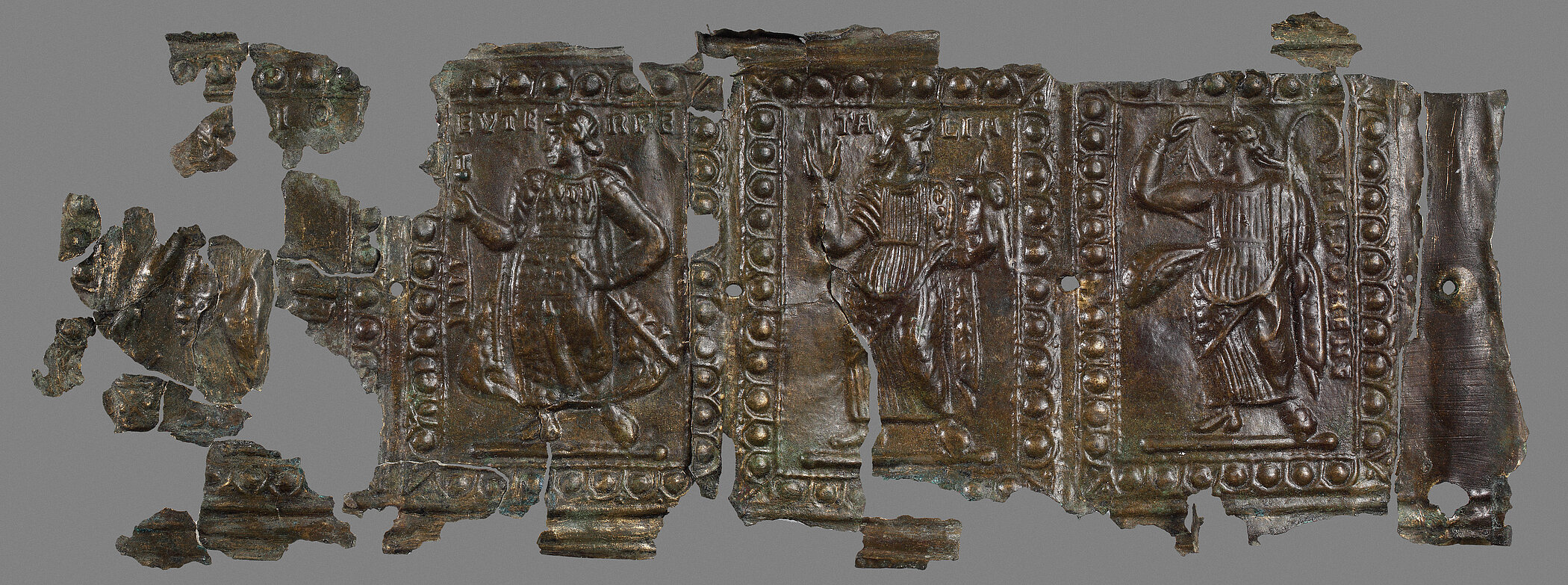Caskets of Late Antiquity. Syncretic Images, Ritual Contexts and Production Techniques in a Time of Change
This project represents the first comprehensive study of late antique caskets. It proposes a systematic reconsideration of these artefacts that incorporates religious and social interactions and visual exchanges, allowing new insights into the historical, sociological and ritual contexts of the production, use and application of this category of objects.
In the material culture of late antiquity, caskets are a privileged category of artefact whose production techniques and complex decorations with pagan and biblical iconography, as well as social and ritual aspects, are examined in this project. The study continues the research begun by Helmut Buschhausen and Dorottya Gáspár at the Austrian and Hungarian Academy of Sciences and aims to complete the contextualisation of late Roman caskets in their iconographic and formal development.
Research questions
The research aim of the project is to provide a thorough re-evaluation of late antique caskets and casket fittings, their categorisation, functions and find contexts in the upper Roman Danube provinces (Noricum ripense, Pannonia prima, Pannonia secunda and Pannonia Valeria) and in selected cases in Upper Italy and Croatia. An important co-operation agreement with the Hungarian National Museum will make it possible to extend the research to include finds from this important collection. Particular attention will be paid to the syncretic pictorial programmes and the religious and private significance of these objects in late Roman society. Archaeometallurgical investigations carried out on a group of caskets and fittings will provide information on manufacturing techniques and clues to continued use and possible reuse in different contexts.
Methodology
The methodology of this project is based on an interdisciplinary approach that combines typochronological studies, iconographic analyses, manufacturing technology, archaeometry and material analysis, historical geography as well as social and religious history. As part of the scientific analyses, the metal finds are first analysed using either a portable X-ray fluorescence analyser (pXRF) or a scanning electron microscope (SEM-EDXS) from VIAS (University of Vienna). Small, non-adherent samples are then taken and their chemical composition and lead isotope ratios are measured at the CEZA Mannheim (Curt-Engelhorn Centre for Archaeometry). This serves to determine the origin of the metal used.
Objectives
Based on the latest research results, findings can be expected for the iconographic analysis of visual patterns, research into the history of religion and production techniques in late antiquity. The study of the late Roman caskets of the Danube provinces, the majority of which are now located in Austria and Hungary, is expected to yield diverse results related to the wealth of religious ideas, the perception of the sacred and the ritual and social customs of people in the late Roman period.
Principal Investigator
- Szabolcs Gál
- Mathias Mehofer
Cooperations
- Christoph Blesl (Bundesdenkmalamt – Abteilung für Archäologie)
- Georg Plattner (Kunsthistorisches Museum Wien)
- Eduard Pollhammer (Sammlungsbereich Römische Archäologie der Landessammlungen Niederösterreich)
- Anna-Laura de la Iglesia y Nikolaus (Diözesanmuseum Freising)
- Jörg Drauschke (Leibniz-Zentrum für Archäologie – LEIZA)
- Susanne Willer (LVR-LandesMuseum Bonn)
- Ralf Grüßinger (Römisch-Germanisches Museum im Belgischen Haus)
- Olaf Mückain (Museum der Stadt Worms im Andreasstift)
- Dominik Hagmman (Schloss Traismauer)
- Gábor Virágos und Tamás Szabadváry (Ungarisches Nationalmuseum)
- Rómer Flóris Művészeti és Történeti Múzeum
- Balatoni Múzeum
- Szent István Király Múzeum
- Intercisa Múzeum Dunaújváros
- MNM Balassa Bálint Múzeuma
- Laczkó Dezső Múzeum – Veszprém
- Ufficio Beni Culturali, Erzdiözese Mailand
- Jakov Vučić (Archeological Museum in Zadar)
- Curt-Engelhorn-Zentrum Archäometrie
Duration
12/2023–11/2027

